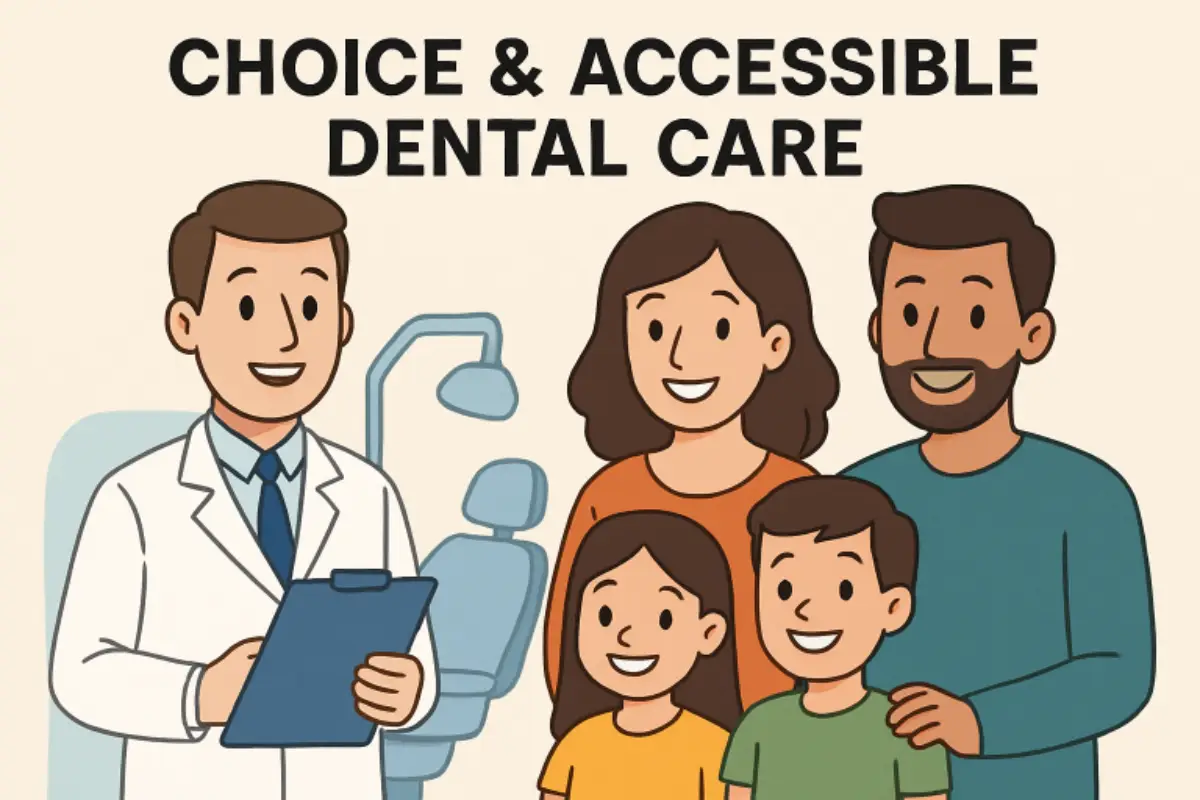Dental care is vital for health, but balancing quality coverage, affordability, and flexibility is tough. Families face evolving dental needs with busy schedules and rising costs. They seek insurance options that meet needs without sacrificing choice or budget. The popular PPO plan offers expanded access and cost savings. For those seeking a blend of choice and value, it’s easy to find PPO dental plans for individuals and families that cater to various age groups and dental health profiles while maximizing convenience. These plans often include a large network of participating dentists, making it easier to receive care without lengthy waits.
Additionally, PPO plans typically offer flexibility in choosing providers, allowing members to see any dentist, including specialists, without prior referrals. Many plans also feature annual maximums and preventive care coverage that help reduce out-of-pocket expenses. As dental insurance options continue to evolve, PPO plans remain a practical choice for many looking to balance affordability with comprehensive dental care.
Contents
- 1 What Are PPO Dental Plans?
- 2 Flexibility in Choosing Dentists
- 3 Cost-Saving Advantages for Members
- 4 PPO Plans and Preventive Care Incentives
- 5 Coverage for Major and Minor Procedures
- 6 Understanding Explanation of Benefits (EOB)
- 7 Making Your Dental Dollars Go Farther
- 8 Final Thoughts: Choosing What’s Right for You
What Are PPO Dental Plans?
A PPO dental plan is a type of insurance that contracts with a broad network of dentists and specialists to provide dental care at reduced rates. Unlike Health Maintenance Organization (HMO) plans, which typically require you to see in-network dentists and often need primary care referrals, PPO plans offer flexibility by allowing members to receive care from providers in or out of the network.
Indemnity plans, on the other hand, may reimburse for any dentist you choose but usually lack negotiated savings. PPO plans are popular because they strike a balance—offering flexibility, lower out-of-pocket costs when staying in network, and coverage even if you go outside the list of preferred providers.
Other appealing features include simple claim submission (dentists often handle paperwork directly), partial coverage for major and minor dental procedures, and incentives for preventive care, making PPOs a smart choice for those who prioritize both financial value and freedom of provider choice.
Flexibility in Choosing Dentists
The hallmark of PPO dental plans is their large network of participating dentists, so members can usually select from a wide range in their area. It means you can stick with a trusted family dentist or, if necessary, seek care from a specialist for more complex procedures.
Importantly, if you need to visit a provider outside this network (such as while traveling or in an emergency), PPO plans still provide coverage—though you may pay a higher portion of the bill. To maximize savings, always verify your dentist’s network status before scheduling visits by checking your insurance provider’s directory or asking your dental office directly.
Cost-Saving Advantages for Members
PPO dental plans are designed to minimize the cost burden on members by leveraging agreements with a broad dental network. These negotiated rates typically reduce expenses for exams, cleanings, fillings, crowns, and more. For example, a routine cleaning might be fully covered or require only a small copay, while restorative procedures like root canals could cost hundreds of dollars less than paying out-of-pocket. Without insurance, dental bills can accumulate quickly, even for the most basic care. PPOs effectively lower these costs and provide a safety net for both expected and unforeseen needs.
PPO Plans and Preventive Care Incentives
Preventive care is the foundation of lasting oral health. Most PPO dental plans fully cover services like twice-yearly cleanings, exams, and X-rays, which can help catch issues early and prevent the need for costly, extensive treatments later. Studies by the Centers for Disease Control and Prevention (CDC) show that regular dental checkups dramatically reduce the risk of gum disease, cavities, and tooth loss. Emphasizing prevention also leads to significant long-term savings and keeps families healthier overall.
Coverage for Major and Minor Procedures
PPO plans address a broad range of dental needs, from minor treatments like fillings to more complex work such as crowns, bridges, and even oral surgeries. While coverage percentages can vary (commonly 70-80% for basic treatments, 50% for majors), having insurance dramatically lessens out-of-pocket expenses. However, keep in mind that some plans impose waiting periods before major procedures are covered, and all have annual maximum benefit limits. Reviewing these details before major dental work is crucial to understanding what you’ll be responsible for paying.
Understanding Explanation of Benefits (EOB)
An Explanation of Benefits (EOB) is a document sent after a dental visit, outlining what your PPO plan paid for, what discounts were applied, and how much you might owe. The EOB helps members keep an accurate record of dental expenses, compare costs to billed rates, and recognize the value of their plan. Reviewing each EOB can alert you to billing errors and help you plan future treatments within the annual coverage maximum.
Making Your Dental Dollars Go Farther
To maximize value, take advantage of fully covered preventive visits, stick to in-network providers whenever possible, and schedule routine exams for everyone in the family. Those with Flexible Spending Accounts (FSAs) or Health Savings Accounts (HSAs) may also combine these tax-advantaged funds with their PPO plan to further minimize costs. Planning treatments to align with your plan’s annual maximum or scheduling larger procedures at year’s end are practical strategies to stretch your benefits.
Final Thoughts: Choosing What’s Right for You
PPO dental plans offer a powerful combination of flexibility, cost savings, and reliable preventive care for both individuals and families. They reduce barriers to seeing your preferred dentist, make it easy to keep up with regular checkups, and provide true financial protection against major dental expenses. When considering your options, focus on coverage flexibility, the size of the provider network, and opportunities for long-term savings to choose the best plan for your family’s health and budget.



